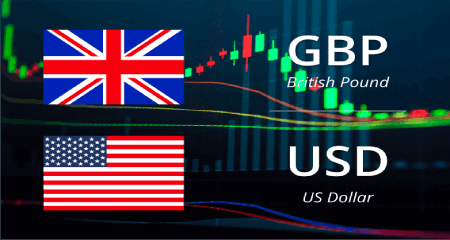
GBP/USD retreats from a multi-week high
The GBP/USD pair comes under some selling pressure on Wednesday, snapping a two-day winning streak and eroding a part of the overnight gains to its highest level since early February. The pair drops to a fresh daily low during the first half of the European session, albeit finds some support near the 1.2300 mark and recovers a few pips in the last hour. Following a two-day downtrend, the US Dollar (USD) regains positive traction and turns out to be a key factor that exerts some downward pressure on the GBP/USD pair. The takeover of Silicon Valley Bank by First Citizens Bank & Trust Company calmed market nerves about the contagion risk and eased fears of a full-blown banking crisis. This, in turn, led to a strong recovery in the US Treasury bond yields since the beginning of the current week, which, in turn, helps revive the USD demand.
That said, the Federal Reserve's (Fed) less hawkish stance, signaling that a pause to interest rate hikes was on the horizon, acts as a headwind for the US bond yields. Apart from this, the prevalent risk-on mood - as depicted by a generally positive tone around the equity markets - might hold back traders from placing aggressive bets around the safe-haven buck. This, along with rising bets for additional rate hikes by the Bank of England (BoE), could lend some support to the GBP/USD pair.
In fact, BoE Governor Andrew Bailey said earlier this week that interest rates may have to move higher if there were signs of persistent inflationary pressure. The bets were lifted further after the British Retail Consortium (BRC) reported that UK shop prices increased from 8.4% previously to 8.9% in the year to March - the highest reading on record since the survey started in 2005. Furthermore, food prices increased 15.0% over the year, also a record high, and could benefit the British Pound. This, in turn, suggests that the path of least resistance for the GB/USD pair is to the upside and any subsequent pullback might still be seen as a buying opportunity. There isn't any relevant macro data due for release on Wednesday from the UK, while the US economic docket features Pending Home Sales later during the early North American session. This, along with the US bond yields and the broader risk sentiment, might influence the USD price dynamics and provide some impetus.
In fact, BoE Governor Andrew Bailey said earlier this week that interest rates may have to move higher if there were signs of persistent inflationary pressure. The bets were lifted further after the British Retail Consortium (BRC) reported that UK shop prices increased from 8.4% previously to 8.9% in the year to March - the highest reading on record since the survey started in 2005. Furthermore, food prices increased 15.0% over the year, also a record high, and could benefit the British Pound. This, in turn, suggests that the path of least resistance for the GB/USD pair is to the upside and any subsequent pullback might still be seen as a buying opportunity. There isn't any relevant macro data due for release on Wednesday from the UK, while the US economic docket features Pending Home Sales later during the early North American session. This, along with the US bond yields and the broader risk sentiment, might influence the USD price dynamics and provide some impetus.
